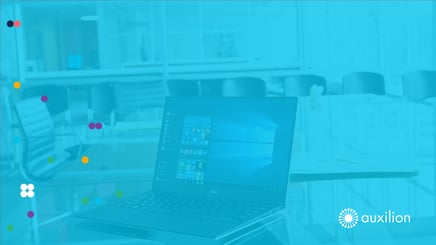Ensuring that employees and customers receive prompt assistance when encountering technical difficulties is vital for all business types in 2025. This is where an IT help desk becomes indispensable. It serves as a central hub for resolving issues, managing requests, and improving the overall IT experience for organisations.
The Core Responsibilities of an IT Help Desk
A well-structured IT help desk facilitates smooth communication between end-users and technical experts. Key responsibilities include:
- Incident Resolution: Addressing user-reported problems such as system crashes, software malfunctions, and network failures.
- Ticket Management: Organising and tracking support requests to ensure timely resolutions.
- User Support: Providing guidance on software, hardware, and network-related concerns.
- Technical Assistance: Helping employees troubleshoot common IT problems to minimise downtime.
- Knowledge Base Management: Creating and maintaining documentation to empower users with self-service solutions.
- Security Support: Addressing cybersecurity threats, password management, and access control requests.
By handling these responsibilities, help desks streamline operations, reduce downtime, and enhance overall productivity.
How an IT Help Desk Differs from a Service Desk
The terms IT help desk and service desk are often used interchangeably, yet they serve different purposes. Below is a comparison:
| Feature | IT Help Desk | Service Desk |
|---|---|---|
| Primary Focus | Resolving technical issues | Managing IT services end-to-end |
| Scope | Incident-based, reactive support | Service-oriented, proactive approach |
| User Interaction | Focuses on fixing immediate problems | Enhances overall IT service delivery |
| Self-Service Options | May have a knowledge base but limited integration | Incorporates automation and AI-driven self-service tools |
| ITIL Alignment | Less structured, focuses on break-fix solutions | Aligned with ITIL best practices |
A help desk primarily tackles technical problems as they arise, whereas a service desk provides a strategic approach to IT service management.
Why Your Business Needs an IT Help Desk
Organisations, regardless of size, benefit from implementing an IT help desk. Some key advantages include:
- Faster Issue Resolution: Streamlined ticketing systems ensure that problems are addressed efficiently.
- Improved User Satisfaction: Employees and customers receive timely assistance, enhancing their experience.
- Increased Productivity: Less downtime means employees can stay focused on their tasks.
- Data-Driven Insights: Help desks track incidents, allowing IT teams to identify recurring issues and implement preventive measures.
- Scalability: Cloud-based solutions enable businesses to expand their IT support capabilities as they grow.
With these benefits, an IT help desk becomes an essential component of a modern business's IT infrastructure.
The Benefits of an IT Help Desk System
An effective help desk solution should offer:
- Multi-Channel Support: Assistance via phone, email, chat, and web portals.
- Automated Ticketing System: Ensures that all requests are logged, categorised, and assigned efficiently.
- AI-Powered Chatbots: Provide immediate responses to common inquiries, reducing the workload for human agents.
- Remote Support Tools: Enable technicians to resolve issues without requiring physical presence.
- Knowledge Base Integration: Offers self-service options to users, reducing dependency on IT staff.
- Analytics and Reporting: Provides insights into support trends, helping businesses optimise IT operations.
By incorporating these features, organisations can significantly enhance their IT support framework.
Best Practices for Implementing an IT Help Desk
To maximise efficiency, businesses should follow these best practices:
- Define Clear Support Processes: Establish well-documented procedures to handle different types of incidents.
- Utilise Automation: Reduce manual effort by automating ticket assignments and responses.
- Offer Self-Service Options: Encourage users to consult the knowledge base before raising a ticket.
- Monitor Performance Metrics: Track response times, resolution rates, and user satisfaction to identify areas for improvement.
- Ensure Continuous Training: Keep IT staff updated with the latest technologies and troubleshooting techniques.
Implementing these strategies enhances the overall effectiveness of an IT help desk and improves user satisfaction.
Choosing the Right IT Help Desk Software
Selecting a suitable platform depends on business requirements. Considerations include:
- Scalability: Can the solution grow with the organisation?
- Integration Capabilities: Does it connect with existing IT systems?
- User-Friendly Interface: Is it easy for employees and customers to navigate?
- Customisation: Can workflows be tailored to specific needs?
- Cost Efficiency: Does the software provide value for money?
Top IT help desk software providers offer flexible options tailored to various business models, ensuring an optimal support experience.
The Future of IT Help Desks: AI and Automation
The evolution of IT support is heavily influenced by artificial intelligence and automation. AI-driven tools enhance efficiency by:
- Predicting Issues: Machine learning algorithms analyse patterns to anticipate potential problems before they occur.
- Reducing Response Time: Chatbots and virtual assistants provide instant solutions.
- Optimising Resource Allocation: AI prioritises and routes tickets based on urgency and complexity.
- Enhancing User Experience: Automated responses improve consistency and speed.
With the integration of AI, IT help desks are becoming more efficient, allowing organisations to focus on innovation rather than troubleshooting.
The Role of IT Help Desks in Cybersecurity
Modern IT help desks also play a crucial role in safeguarding business data and networks. Key security-related functions include:
- Incident Response: Quickly addressing security breaches and mitigating damage.
- User Authentication Management: Ensuring that only authorised users have access to systems and networks.
- Patch Management: Keeping software up to date to reduce vulnerabilities.
- Employee Training: Educating staff on best security practices to prevent breaches.
IT Help Desk Metrics to Track Success
To measure the effectiveness of an IT help desk, businesses should track key performance indicators (KPIs), such as:
- First Response Time (FRT): The average time it takes for an agent to acknowledge a support request.
- Resolution Time: The duration from ticket creation to problem resolution.
- Customer Satisfaction Score (CSAT): Based on user feedback after issue resolution.
- Ticket Backlog: The number of unresolved tickets at any given time.
A well-managed IT help desk is a crucial asset for businesses, ensuring seamless operations, reducing downtime, and enhancing user satisfaction. Understanding its role, implementing best practices, and leveraging advanced technologies can significantly improve IT support services. By adopting the right strategies and tools, businesses can transform their help desks into powerful engines of efficiency and growth.







